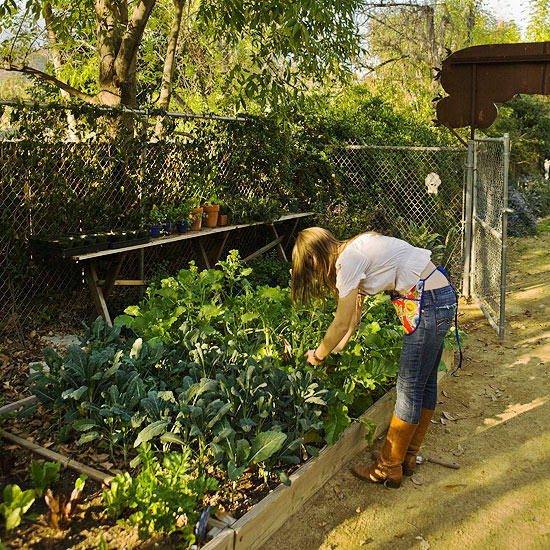






Note: Lawns may not be economically or environmentally responsible in many areas of the Mountain West and High Plains. Check with your county's cooperative extension service to find out if a lawn makes sense in your area.
continue reading belowGet your mower ready: First things first: Take care of your mower. Service it in early spring; you'll beat the rush and your mower will be ready when you need to start cutting your grass. It's easily overlooked, but don't forget to sharpen the mower's blade at the start of every season. A sharp blade will keep your lawn healthy and looking good.
How to Sharpen Your Lawn Mower Blade
Prevent annual weeds: Stop crabgrass and other annuals weeds with a well-timed application of pre-emergence herbicide. Spread the pre-emergence herbicide as forsythia blooms start to drop.
Aerate compacted soil: If your lawn doesn't grow well because of hard, compacted soil, aerate in spring. This loosens the soil, allowing grass roots to reach deeper and the soil to absorb moisture better.
Mow your grass: Take out the lawn mower once your grass reaches about 3 inches tall. Cool-season grasses typically do best when cut after they get more than 2 inches tall -- this helps the grass ward off weeds and withstand summer drought. Just be sure you don't stress your lawn by taking off more than one-third of the leaf length in one mowing.
Fertilize: A light application of fertilizer will help get your lawn off to a great start. Don't overdo it; select a slow-release or organic fertilizer. Feed your lawn when you need to mow it for the first time in spring. Don't feed it earlier.
Get rid of grubs: If grubs are a problem in your lawn, apply a grub-control product that continues to work through the season. The best time to apply this product is in early June.
Keep mowing: Watch how fast your lawn grows once it gets hot. The lawn may only need mowing once every two or three weeks. During cooler, moister periods, it may need mowing twice a week. Mow based on your lawn's growth, not by your calendar.
Water as needed: If you don't want to spend a fortune on water, let your grass go dormant during drought. (Note: It will turn brown, but it will go green when the rains come again.) If you'd rather avoid a brown summer lawn, select drought-tolerant grasses or plan on giving your lawn about 1 inch of water a week.
Fertilize: Fall is the most important time to feed your lawn. Apply fertilizer twice: In early and late autumn.
Don't stop mowing: When fall arrives, you'll notice your lawn will start growing more again. Continue mowing as needed through the end of the season.
Fall cleanup: Deal with fallen leaves so they don't smother your lawn over winter. Note: If you don't have time to rake leaves, run them over with your lawn mower several times. This chops the leaves into small pieces that quickly decompose and add to your soil's structure.
Aerate compacted soil: Cooler autumn temperatures mean your grass will start growing more again -- so it's also a great time to aerate to loosen compacted soil if you didn't get a chance to do it in spring.
Attack perennial weeds: Perennial weeds, such as dandelions, are easiest to kill in autumn. Use a broad-leaf herbicide as they're going dormant.
More About Stopping Weeds in Your Lawn
Overseeding: The cool days of mid-fall are the best time to overseed or start a lawn. Give your new grass at least a month before your first average frost date so it can get established.
More About Overseeding Your Lawn
Find your area's first average frost date
How To Choose the Right Artificial Grass For Your Lawn
The Best Way to Buy Grass for Your Lawn
Garden Pest Control - The Secret of Caring For the Garden and Lawn
Proper Caring Of Lawn In The Fall And Winter
Lawn-Care Calendar for the Mountain West and High Plains
Enjoy lawn Practicality And Convenience, Get The Artificial Grass Melbourne
Do you intend to buy the splendid turf and lawn grass in Woking?
Bermuda And Flawless Bermuda Lawn
Choosing The Right Grass For Your Yard
How to Choose the Best Type of Grass for Your Lawn
10 Cold- and Heat-Tolerant Perennials and Shrubs for the Arid West
Copyright © www.100flowers.win Botanic Garden All Rights Reserved